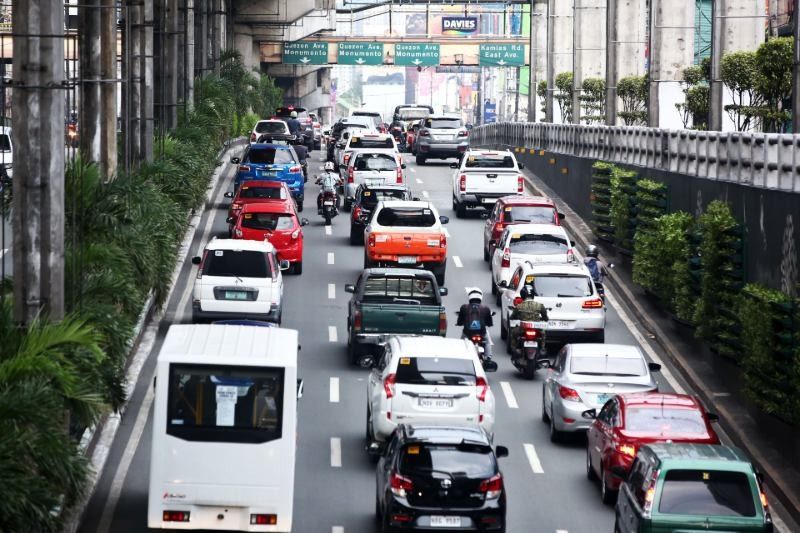Familiar transportation woes as Metro Manila lurches to 'new normal'

MANILA, Philippines — After over two months of strict quarantine rules, Monday morning's implementation of general community quarantine in Metro Manila saw heavy traffic and commuters scrambling to get rides.
As social distancing measures remain the norm in the capital — an epicenter of the disease — most modes of mass transportation have been forced to run on limited capacity as thousands troop back to work.
Many commuters took to social media to air their frustrations as the familiar sight of Epiphanio delos Santos Avenue's so-called "carmageddon" flooded timelines for the first time in months.
Even before the coronavirus outbreak began in Wuhan, China, labor and transport unions in the Philippines were tagging the situation as a mass transportation crisis, with long lines and technical malfunctions being commonplace in the daily lives of Filipino commuters.
LOOK | Pila ng mga pasahero sa waiting platform ng MRT Taft Avenue Station sa Pasay City as of 7:16 AM. @News5AKSYON @onenewsph pic.twitter.com/XO25jwXS2w
— JC Cosico (@JCCosico) May 31, 2020
Speaking in an interview with CNN Philippines' "The Source" earlier Monday, Transportation Secretary Arthur Tugade said: "We implore and plead with you to give us patience and understanding."
"We have never promised or said that transportation will be extensive and will meet the requirements of all on the first day of GCQ — and even in the duration of the GCQ for that matter. Because as I’ve said, our approach is partial, limited, calculated, and gradual," he added.
During President Rodrigo Duterte's public address on Thursday, Tugade also said that the public should "not expect 100% operations" from public transportation modes, particularly the trains.
During the Modified Enhanced Community Quarantine, employers were told to provide transportation for their workers or stay closed.
Experts have warned that the coronavirus outbreak can detonate the ticking time bomb that is the public transportation sector from which the country stands to lose billions if left unchecked—along with a massive second wave of confirmed patients of the new pathogen.
Traditional jeepneys, which are among the main modes of transportation for most Filipinos, are still not allowed to ply roads as of this post.
ATM| Kuha sa loob ng MRT pic.twitter.com/z5IhCEJaHp
— News5 AKSYON (@News5AKSYON) May 31, 2020
According to Tugade, jeepneys may be allowed to operate subject to certain conditions, including passing a test to prove they are roadworthy. They must also maintain security and health protocols.
"It may be difficult for some, especially those who will physically report, but we live in extraordinary times and situation," presidential spokesperson Harry Roque said Thursday.
As it stands, a number of senators have already said that the current public transport system cannot possibly service the volume of employees projected to return to work.
The MMDA and the LTFRB have yet to respond to requests for comment as of this post.
LOOK: Traffic is slow-moving from Estrella up to Ortigas; then Santolan up to Kamuning. pic.twitter.com/nNk7ZAppn2
— Gerard de la Peña (@gerarddelapena) June 1, 2020
- Latest
- Trending































